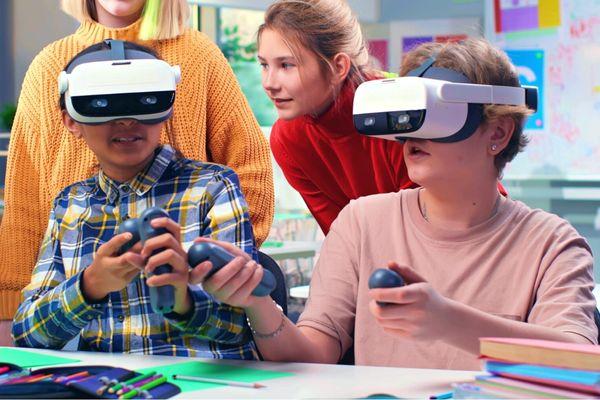
Education is constantly changing, including the methods and technology we use to teach students. Below, we explain the advanced technology that could become common in your children’s classrooms soon!
3D Printing
3D printing technology is gradually becoming more common in many industries, but education is one where its usefulness is obvious. One of the most significant benefits of 3D printing technology in education is that it can create complex and realistic models as learning tools and visual aids for all ages.
While learning the basics of human anatomy, a classroom of grade schoolers could print out a realistic model of the bone structure of the human foot. Likewise, an engineering student could work out the kinks of their new bridge design by printing a 3D model for inspection. Whatever the level of education, there’s no doubt about the benefits 3D printers could have in fueling interest and creativity.
Augmented Reality
Currently, the potential of augmented reality (AR) is limited to the use of a smartphone or tablet camera to capture images. But there’s a wide belief that we’ll soon have much more practical devices for augmented reality, such as AR glasses.
Until then, there are still many practical ways that AR can make learning more visually compelling and interesting for students. AR allows students to visualize the size and scale of things they’d only read about in textbooks or see at a museum, from dinosaurs to ancient architecture.
Smart Boards
The smart board is another technology that could become common in classrooms. Improving upon chalkboards and whiteboards, every classroom may soon have a smartboard. In fact, smartboards are already in use in some classrooms and applications. As the technology progresses, many believe they’ll be as common as whiteboards.
An LCD touchscreen board can act as a giant tablet for a classroom, opening a new avenue of learning opportunities for teachers to experiment with. Plus, smartboards don’t cause chalky or marker-smudged fingers!
Virtual Reality
Virtual reality is a fast-moving technology with many innovative companies investing significant resources into creating an artificial environment. It’s an exciting technology because there’s practically nothing that couldn’t be created or experienced in the artificial world of virtual reality. This is a tantalizing concept for education.
Imagine a virtual field trip where history students walk through a detailed recreation of the Roman Colosseum or biology students swim through the Great Barrier Reef without leaving the classroom! Virtual reality is a technology many believe will significantly affect our culture and way of life, so there’s no reason to believe it won’t do the same for our classrooms.



















